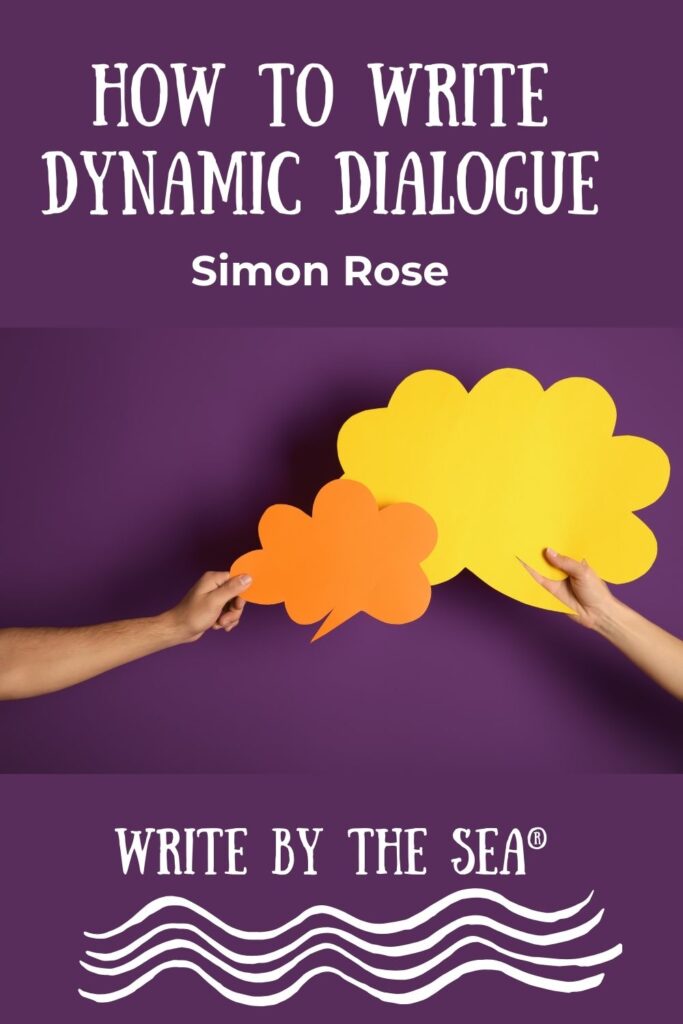by Simon Rose, Contributing Editor (this post is an excerpt from Simon’s book The Children’s Writer’s Guide)

Dialogue is an essential part of every story.
It moves the plot forward and builds characterization.
Dialogue not only livens up a scene, but the way the characters talk to each other can reveal many things about the people that inhabit your story and helps to truly bring them to life.
Is Said Dead?
Often the word ‘said’ is the best way to show who is speaking, but you need to avoid too many ‘saids’ in a row.
Consider this example of a simple verbal exchange between two characters.
“You’re very late,” she said.
“But I have a very good reason for that,” he said.
“Do you realize what time it is?” she said.
“I almost had an accident, rushing to get here. The traffic through downtown was a nightmare,” he said.
“I’m sorry, I shouldn’t be angry with you,” she said.
While this is perfectly fine in terms of indicating which character is speaking, most of the ‘saids’ can be eliminated from the exchange by simply adding a few descriptive words to show which person the section of dialogue is assigned to.
Here’s a revised version of the same conversation.
“You’re very late.”
The dark-haired woman was pacing in front of the desk as the man entered the office.
“But I have a very good reason for that,” he said.
“Do you realize what time it is?”
She held up her phone, tapping the screen impatiently.
“I almost had an accident, rushing to get here,” he explained as he sat, clearly exhausted, into the chair the window. “The traffic through downtown was a nightmare.”
“I’m sorry, I shouldn’t be angry with you.”
See the difference?
And of course, you don’t have to use the word ‘said’ all the time anyway, since there are lots of alternatives so that your dialogue doesn’t sound stale and uninspiring.
Other words you can use include replied, asked, announced, exclaimed, told, answered, uttered, stated, yelled, shouted, and so on.
However, don’t be tempted to employ words that mean the same as ‘said’ but aren’t really appropriate to the situation depicted in the scene, merely to make it read a little differently.
For example, some words are simply too grandiose and don’t really fit, making your writing sound somewhat overblown and even occasionally ridiculous.
“You’re very late,” she proclaimed.
“But I have a very good reason for that,” he declared.
“Do you realize what time it is?” she exclaimed.
“I almost had an accident, rushing to get here. The traffic through downtown was a nightmare,” he announced.
“I’m sorry, I shouldn’t be angry with you,” she divulged.
Although you should avoid overusing ‘said’, going too far in the other direction isn’t that wise either.
After all, if you decided that you needed to go to the store to get some milk, you’re unlikely to proclaim or declare that intention when you make the statement.
Also, in the above example the character can’t really exclaim her question about what time it is.
The word exclaim is ideally for use with single words or short phrases, such as “What!” or “Oh no!” or “Help!”
There are lots of words to use when crafting dialogue but sometimes, simpler is better and will be more appreciated by your readers.

Learn more about The Children’s Writer’s Guide 2 and all Simon’s other books on his website at https://simon-rose.com/.
Simon also offers a variety of coaching services for writers and his Writing for Children and Young Adults online course.
Note: Posts and pages on this site may contain some affiliate links for your convenience (which means if you make a purchase after clicking a link I will earn a small commission but it won’t cost you a penny more)! Read my full disclosure and privacy policies…




